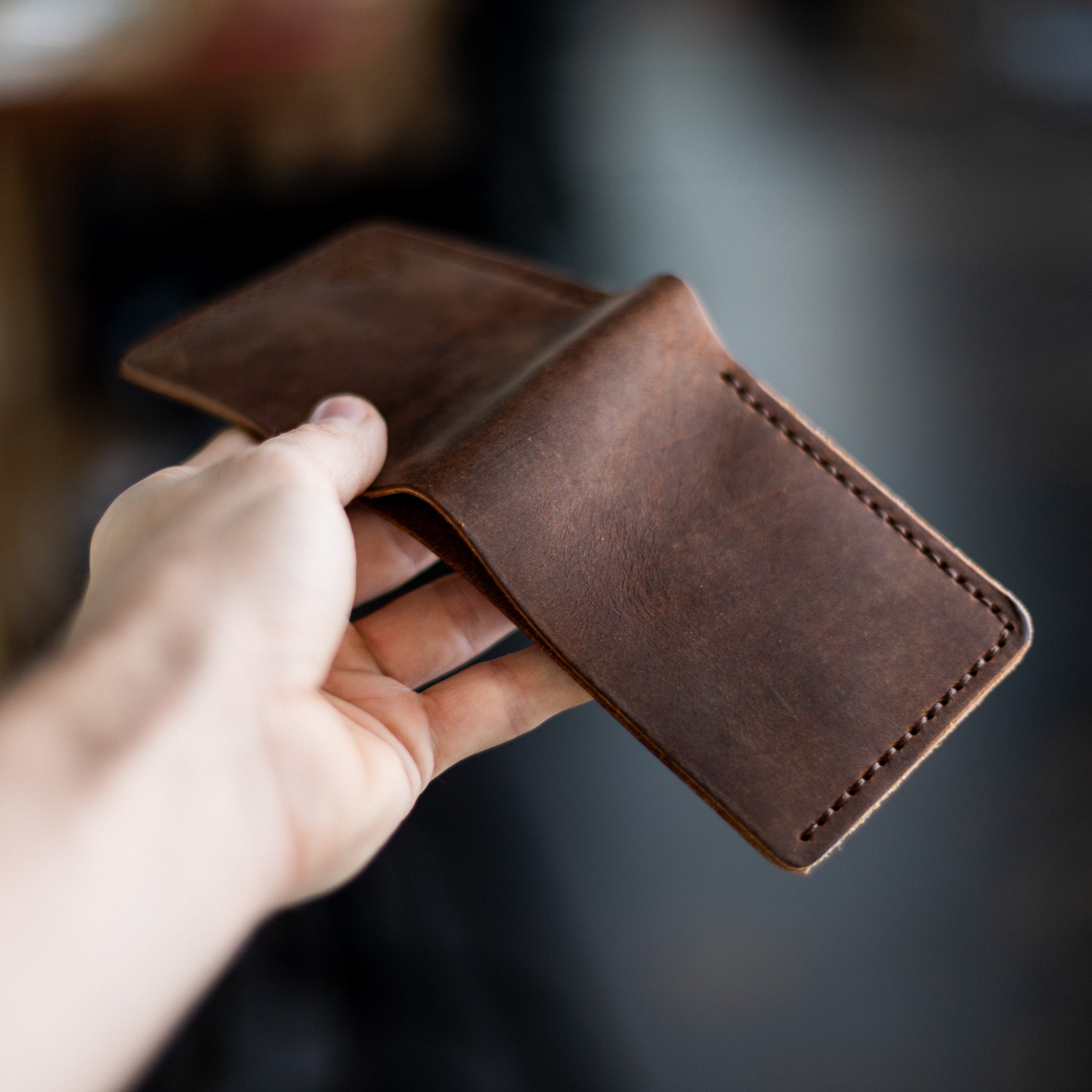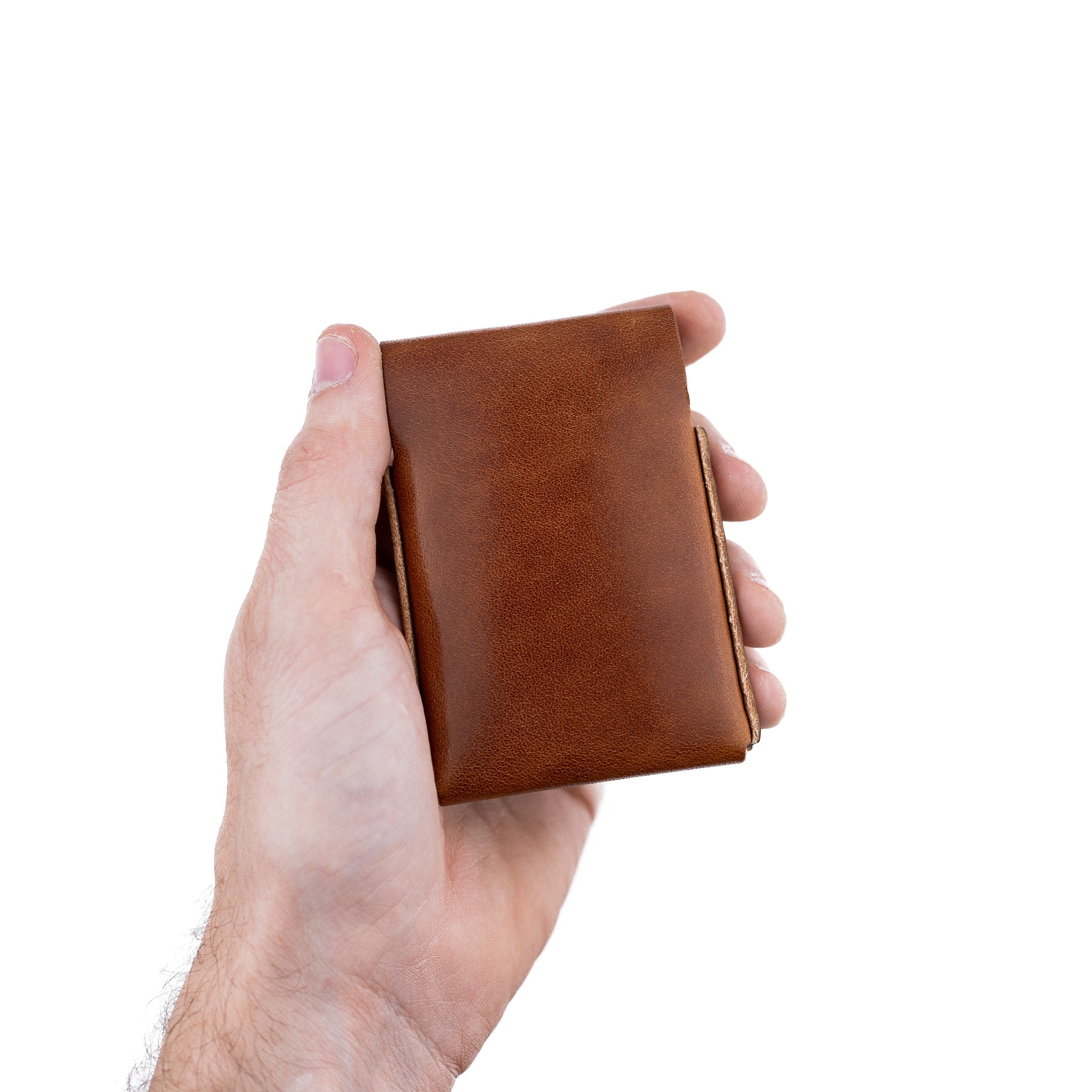
How Often to Condition Leather Wallets and Belts
A leather wallet softening in your pocket with every use. A belt darkening at the buckle from years of wear. These aren’t signs of decline, they’re the marks of a story in progress. Every scuff and crease carries memory. But there’s one simple truth behind leather that lasts: it needs nourishment.
Conditioning is that nourishment. It replenishes the oils that keep leather supple, resilient, and beautiful. Without it, leather dries, cracks, and loses the character that makes it valuable. With it, wallets and belts can outlive their first owners, carrying history across generations.
But here’s the key: timing matters. Condition too rarely, and the leather weakens. Condition too often, and the fibers saturate and soften too much. How you usually condition your leather goods depends on the type of leather, the climate you live in, and the way you use your wallet or belt.
This article provides a complete framework for building a leather care routine that ensures long-term durability without guesswork.
Why Conditioning Matters for Long-Term Leather Care
Leather is skin, and like skin, it changes with its environment. Sunlight, heat, humidity, friction, and time gradually pull oils from the fibers. As those oils diminish, the hide becomes less elastic and more prone to cracking.
Conditioning restores balance. It works like a moisturizer, absorbing into the fibers, keeping them pliable, and preventing damage. More than appearance, it preserves function. A wallet remains flexible enough to fold without splitting. A belt stays strong where the buckle fastens.
A craftsman once compared conditioning to oiling wood furniture. “You don’t wait until the surface splinters,” he said. “You care for it steadily, and it grows richer with age.” That same principle applies to leather: steady maintenance turns an accessory into an heirloom.
The Factors That Influence Conditioning Frequency
There’s no universal calendar. Instead, three key factors shape the timing: leather type, climate, and usage.
The Type of Leather
Different leathers absorb and retain oils differently.
-
Full-Grain Leather – The highest quality, retaining the entire grain layer. Found in The Dutchman wallet and The Belt. Its dense fiber structure resists drying, so conditioning every 3–6 months is enough for most people.
-
Top-Grain Leather – Sanded for uniformity, less breathable than full-grain. Benefits from conditioning every 4–6 months.
-
Genuine Leather – Made from bonded layers, more porous and less durable. Needs frequent attention: every 2–4 months.
-
Suede and Nubuck – Require protective sprays rather than heavy conditioners. Care involves brushing and periodic treatment with specialized products.
-
Exotic Leathers (Ostrich, Crocodile, Shell Cordovan) – Each behaves differently. Ostrich, with its open pores, dries quickly and needs more frequent conditioning. Crocodile and alligator, with dense scales, need lighter applications. Shell cordovan, dense and naturally oily, needs the least care, often just a wipe and light cream every 6–12 months.
The leather itself sets the baseline. A rugged bifold wallet may hold oils longer than a thin card holder, but both benefit from consistent attention.
Climate and Environment
Where you live matters just as much as what you carry.
-
Dry Climates (Arizona, Nevada) – Arid air draws oils from hides quickly. Condition wallets and belts every 1–2 months.
-
Humid Climates (Florida, Gulf Coast) – Less risk of drying, but more risk of mildew. Condition every 4–6 months, but focus on ventilation and storage.
-
Cold Winters (Northern U.S., Canada) – Indoor heating systems dry the air dramatically. Even in winter, leather can crack if ignored. Condition every 2–3 months.
-
Coastal Climates (California Coast, New England) – Salt air has a drying effect. Condition every 2–3 months and wipe down regularly to prevent salt buildup.
-
High Altitudes (Colorado, Utah) – Thinner, drier air speeds evaporation. Condition every 2–3 months.
One Lost Dutchman customer once shared how his belt aged differently after moving from humid Florida to dry Colorado. Within weeks, he noticed stiffness he’d never seen before, proof that environment shifts demand adjustments in care.
Usage Habits
The more you use an item, the more often it needs conditioning.
-
Daily-Carry Wallets – Constant friction, sweat, and oils pull moisture from leather. Condition every 2–3 months.
-
Work Belts – Worn outdoors in sun and dust, they need conditioning every 2–3 months.
-
Occasional Use Items – Wallets rotated with others, or belts worn only occasionally, may only need attention every 6–12 months.
-
Display or Collection Pieces – Rarely used goods still need light care. Condition once a year to prevent drying in storage.
Lifestyle Scenarios: Real-World Conditioning Schedules
To make this practical, consider four different lifestyles:
-
The Professional – A bifold wallet carried daily in an office environment. Condition every 3–4 months.
-
The Outdoorsman – A rugged belt exposed to sun and weather. Condition every 2–3 months.
-
The Minimalist – A slim Card Holder carried occasionally. Condition every 6 months.
-
The Collector – Rotates multiple wallets, including a Mini Franklin. Condition once a year.
Each schedule adapts to the rhythm of life. The leather’s needs follow your habits.
Seasonal Leather Care
Leather reacts differently in summer and winter.
-
Summer – Heat and sunlight accelerate drying. Condition more frequently, especially if the leather is exposed outdoors.
-
Winter – Indoor heating pulls moisture from the air. Even if your wallet never leaves your coat pocket, it still dries faster. Condition during the middle of winter to protect against cracks.
Some owners make conditioning part of seasonal transitions: spring cleaning, summer prep, fall refresh, winter protection. This rhythm ensures no season passes without attention.
The Leather Care Routine in Practice
Knowing when is only half the equation. Here’s how to condition properly:
Step 1: Clean
-
Wipe with a dry cloth.
-
For dirt, use a specialized cleaner (never soap).
-
Air dry in shade.
Step 2: Condition
-
Apply a small amount of conditioner to a soft cloth.
-
Work into leather in circles, focusing on edges and bends.
-
Let it absorb for 15–20 minutes.
-
Buff gently with a dry cloth.
Step 3: Protect
-
Use a leather protector spray for added defense.
-
Store in cloth bags, not plastic, to avoid trapped moisture.
This process, repeated at the right intervals, forms the heart of long-term leather care.
Choosing the Right Conditioner
The best conditioners:
-
Contain natural oils and waxes (beeswax, lanolin, mink oil).
-
Avoid silicones and petroleum.
-
Match the weight and type of leather.
For example, The Vertical Dutchman benefits from lightweight creams that won’t clog its slim profile. Thicker goods like The Catch-All tray respond well to cream-based or oil-based products.
Common Mistakes to Avoid
-
Over-conditioning – Too much product clogs pores and softens structure.
-
Household cleaners – Alcohol, soap, or polish strip oils permanently.
-
Heat drying – Cracks leather fibers.
-
Ignoring interiors – Dust builds up in wallet card slots.
-
Neglecting stains – The longer they sit, the deeper they set.
Anecdote: A Belt That Outlasted Its First Owner
A craftsman once recalled a rancher’s belt worn daily for over thirty years. Every season, the man wiped it down, conditioned it, and let it rest. When he passed, his son wore the same belt, still strong, supple, and darkened with history.
That belt wasn’t just a tool; it was a legacy. Proper conditioning transformed it from an object into a vessel of memory.
Carrying the Tradition Forward
Conditioning isn’t about vanity. It’s about stewardship. By feeding oils back into leather, you honor the material, the craft, and the years ahead.
At Lost Dutchman Leather, our wallets, belts, and accessories are built from full-grain hides meant to last generations. With steady conditioning, your wallets and belts won’t just endure, they’ll grow richer, darker, and more personal with every passing year.
If you’d like tailored advice for your routine, you can always get in touch. And if you’re ready to invest in leather that rewards care, explore our full collection today.

